The Sony RX100 VI and VII with their tremendous 24-200mm zoom range are a huge departure from the previous models that they’re now firmly into travel zoom territory.
Here, we round up some of the best accessories for your RX100 VI and VII.
First things first, if you’re new to the Sony RX-100 series, the best accessory to get might be the online manual.
All done? Great. Now, let’s give you a rundown of the best accessories for your Sony RX100 VII and VI.
UPDATE: If you haven’t seen it yet, I have also posted my real world Sony RX100 VII review here.
These cameras might be pocketable and look like point and shoots, but they pack a lot of power and imaging prowess that put larger cameras to shame.
These accessories will help you get the most out of your camera.
Extra battery with compact USB travel charger
If you’ve never used any of the RX100 series cameras, then you should know that they are power hungry little beasts.
It’s amazing what Sony have managed to cram in their compact bodies, but the biggest trade-off has been the decision to continue using the relatively low capacity Sony NP-BX1 battery.
This is the same battery used since the original RX100.
It’s a tiny battery, which keeps the size of the camera down. But it just doesn’t last very long. It’s rated for 260 images or just over 40 minutes of video.
So, extra batteries are pretty much required.
You can grab a couple of third-party batteries such as these ones, which come with a wall charger, too.
But, I recommend the official Sony USB travel charger and battery bundle – the Sony ACCTRDCX Travel Charger Kit. This bundle gives you a compact USB charger, and 1 original Sony NP-BX1 battery.
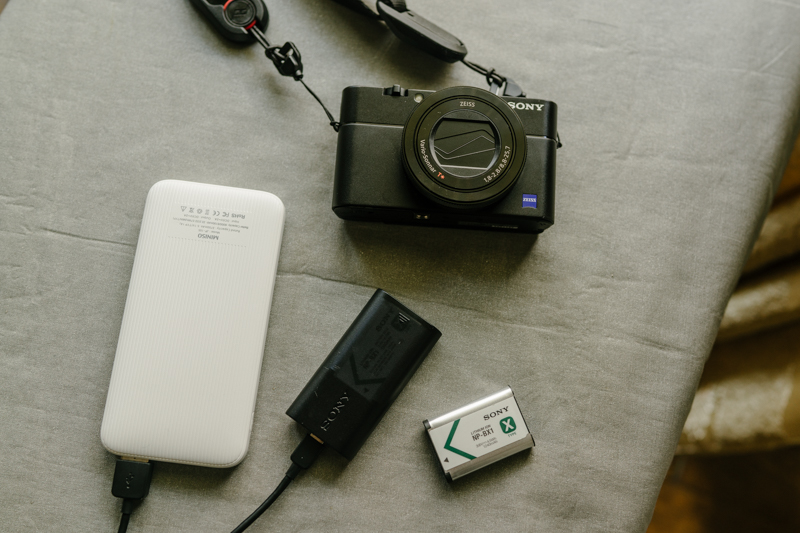
Although you can charge the battery in-camera, it’s always handy to have an external charger around. This way, you can have one battery charging, and you can still keep shooting.
NOTE: A brand new Sony RX100 M7 does not come with a dedicated charger in the box.
>>> Check the price of the Sony USB travel charger with extra battery on Amazon.
If all you want is an external charger, and you don’t want the compact charger or the extra battery, then you can get the Sony BC-TRX external charger for Sony RX-100 series batteries.
Best Memory Cards for the Sony RX100 VI and VII
The Sony RX-100 Mk 7 and Mk 6 both feature one SD card slot for up to UHS-1 cards.
This means there is no benefit to buying more expensive UHS-II cards, unless you want the faster read speeds (when transferring to your computer.)
As a minimum, I generally recommend 128GB cards, especially if you shoot video.
With their burst shooting capabilities, high quality 4K video and slow-motion video options, the RX100 M7 and M6 will really need high capacity cards.
If you’re primarily shooting video, get at least 256GB capacity cards and consider UHS-II cards, for the faster read speed when transferring to your computer.
Recommended 128GB UHS-1 Cards:
Sandisk 128GB Extreme SDXC UHS-1 – read transfer speeds up to 150MB/s
Lexar Professional 667x 128GB SDXC UHS-1 – read transfer speeds up to 100MB/s
Recommended 256GB UHS-1 Cards:
Sandisk Extreme 256GB SDXC UHS-1 – read transfer speeds up to 150MB/s
Lexar Professional 256GB SDXC UHS-1 – read transfer speeds up to 150MB/s
Recommended 128GB and 256GB UHS-II Cards:
NOTE: In order to reach these read transfer speeds, you MUST have a UHS-II card reader.
Otherwise, there is no point in using them for the RX100 VI or VII. Again, the camera can only WRITE up to UHS-I speeds. The only benefit of UHS-II cards is when you transfer to your computer.
The extra speed is useful if you shoot a lot of video, because the files are frequently very large.
For stills shooters, there is very little benefit, might as well go grab a cup of coffee and wait for your images to transfer.
Sony M-Series 128GB SDXC UHS-II – read transfer speeds up to 260MB/s
Sony M-Series 256GB SDXC UHS-II – read transfer speeds up to 277MB/s
Lexar Professional 128GB SDXC UHS-II – read transfer speeds up to 250MB/s
Lexar Professional 2000x 128GB SDXC UHS-11 – read transfer speeds up to 300MB/s
External Grip for the Sony RX-100 VII
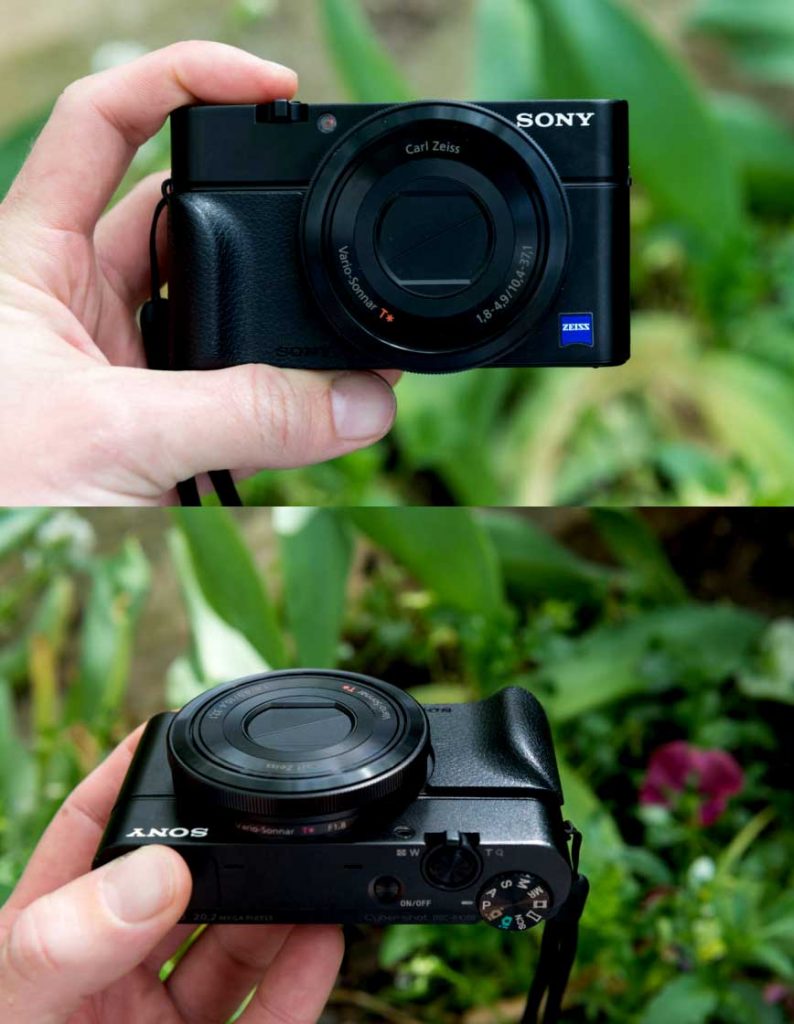
The venerable Sony AGR2 attachment grip has worked for all previous RX-100 models, and so it is with the RX100 VII.
This little grip is made of a rubbery, pleather like elastomer material, which does wonders with improving the handling of the camera.
It attaches via double sided adhesive, and is very easy to put on. Once you’ve got it on, it feels like part of the camera. Why this doesn’t just become a regular part of the camera is beyond me.
If you’re constantly worried about dropping your camera, or just dislike the soap bar feeling of a bare RX100, this is one option.
The big downside is that you will no longer be able to use the LCJ-RXK Jacket Half Case (below), but you can still use a regular camera pouch.
>>> Check the price of the Sony AGR2 attachment grip on Amazon.
Cases and Jackets for the Sony RX100 VI and VII
Sony LCJ-RXK Jacket Half Case for the RX-100 series
This soft carrying case for the Sony RX100 series is made of fake leather, but it still feels high quality.
The best thing about this case is that you can remove the top covering and just use it as a half-case, which also doubles as a nice grip for the camera.
Another bonus is that it comes with a tripod mount on the bottom, so you don’t have to remove the case if you want to mount it on one of the shooting grips (below) or a tripod.
BUT, you do have to remove the case if you want to access your memory card or change the battery.
This case will also NOT work with the Sony AGR2 attachment grip (above).
>>> Check availability and current price of the Sony half-case and camera jacket on Amazon.
Sony LCS-RXG/B Soft Carrying Case for the RX100 Series
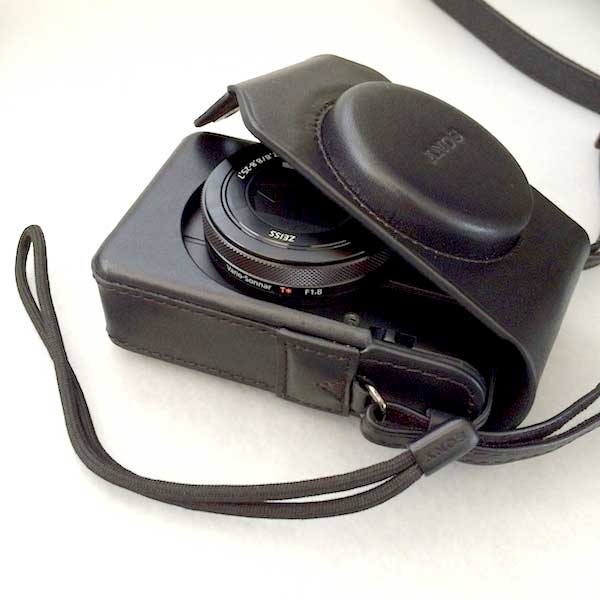
This high-quality case is made with real leather and comes with a detachable strap for cross body carry.
Despite the name, it’s not really a “soft” case. If you want a soft case, you’re better off getting a neoprene case or a small pouch.
This one is custom fit for the Sony RX100 series, and fits all models from the original RX100 up to the RX100 VII. And yes, it can fit a camera with the AGR2 attached. It’s a tight fit, but it can fit.
Don’t be confused by the description on the Sony website – there is NO belt loop for this. It’s meant to be carried with the strap over the shoulder or cross body, or used by itself and put in a larger bag.
>>> Check the availability and current price of the Sony LCS-RXG soft case on Amazon.
Sony Shooting and Vlogging Grips for the RX100 VI and VII
Sony’s shooting grips are basically mini tripods with built-in features that makes vlogging or shooting easier.
Designed for Sony’s compact cameras and mirrorless cameras (including their APS-C a6400, a6500 series and the full-frame a7 and a9 series), these grips attach to the tripod mount of your camera.
Aside from giving your fingers more purchase these do double duty as a selfie stick and mini table-top tripod in one.
Best of all, they allow you to control certain camera functions through buttons on the grip.
Sony GP-VPT2BT Wireless Bluetooth Shooting Grip and Tripod with Remote Commander for RX100 VII
NOTE: This wireless grip does NOT work with the Sony RX100 VI. Although the VI has a bluetooth module, it’s used solely for transferring location data (geo-tagging) from a smartphone.
This is Sony’s premium shooting grip, which works with any Sony mirrorless camera with built-in bluetooth capabilities.
So, if you’ve got a camera with bluetooth like the Sony a6600, Sony a7III, a6400, a6100 etc.. this grip will also work. (maximum load: 1.5 kg) – but it will NOT work with the RX100 VI.
It features a nice, compact handle that transforms into a mini table-top tripod.
But the headline feature is that it also works as a wireless remote that allows you to start/stop video recording, take a photo and zoom the lens (including clear image zoom) plus access to the C button, duplicating the one on the camera.
There’s also a nice mechanism that allows you to quickly flip the camera forwards or backwards. This is useful for vlogging, where you might want to frequently turn the camera towards your face (selfie mode), and forwards (normal shooting) to quickly show your audience what you’re looking at.
>>> Check the availability and current price of the Sony GP-VPT2BT on Amazon.
Sony VCT-SGR1 Shooting Grip and Mini-Tripod (wired)
If you don’t mind having some wires dangling around your camera, you can also grab this Sony shooting grip, which also allows you to start/stop video recording, take a photo and zoom the lens.
Unlike the GP-VPT2BT (above), this one doesn’t duplicate the C shortcut button on the camera.
This also serves as a nice table-top tripod, and one thing it has over the GP-VPT2BT is that it comes with a bracket with a cold shoe mount, allowing you to mount an external microphone to the side.
>>> Check availability and current price of the Sony VCT-SGR1 Shooting Grip on Amazon.
Best mini table-top tripod for the RX100 VII and VI
If you don’t fancy any of the Sony shooting grips above, and just want a plain mini tripod with no fancy camera controls, you can grab one of these:
Manfrotto Mini Pixi Evo
This is one of the most popular table-top tripods on the market, thanks to its compact size, light weight, great build quality and affordable price.
Made with a combination of stainless steel and a high quality polymer, this tiny wonder measures just 7 inches in length when folded.
It’s rated for up to 2.2 pounds, so you can potentially use it with other camera set-ups as well.
It has a built-in micro-ballhead, and the legs are curved so it’s more comfortable to hold as a shooting grip or selfie stick. Its also got rubber feet to prevent slipping and to protect your nice coffee table at home, from scratches.
>>> Check availability and current price of the Manfrotto Mini Pixi Evo Tripod on Amazon.
Sirui 3T-15 Tabletop Tripod with B-00 Ball Head
If you want something more high end than the Manfrotto Pixi (above), this Sirui is the one to get.
Unlike the Manfrotto which has an integrated micro-ballhead, this one comes with a real, detachable head, with Arca-type compatible plates – the Sirui B-00 balhead.
This also allows for some flexibility, because you can take the ballhead off, and use it on larger tripods.
With a folded length of just 8.9 inches, this one is slightly longer than the Manfrotto, but that’s mostly because of the height of the ball head.
This is a very well made tripod and ballhead, with a load capacity up to 11lbs or almost 5kg. This can also hold some serious gear.
This is a bit overkill if you’re only planning on using it with the RX100 series, but if you have other larger cameras, or are looking for some serious macro work or product photography, this is a great, compact option.
>>> Check current price and availability of the Sirui 3T-15 table tripod with included detachable ballhead on Amazon.
Best LCD screen protector for the Sony RX100 VI and VII
I rarely use screen protectors on most of my cameras now. We’ve come a long way from the old scratchy LCD panels that used to plague most digital cameras.
With LCD displays these days, you’re not going to get the normal ‘small scratches’ you get from daily use. Although you still run the risk of a large scratch if you bump into something, or from regular contact with a zipper in your bag, for example.
If you want the extra protection “just in case”, you can grab high quality anti-glare screen protectors from Expert Shield which work on both the RX100 M6 and M7.
Can you put a filter on the RX100 VI and VII? Neutral Density (ND) filters and Circular Polarizers (CPL)
Due to the way the lens retracts into the body when powered off, the RX100 VII (and all previous models) don’t have filter threads to which you could attach screw-in filters.
With older models such as the RX-100 IV and V, and the RX100 VA, this wasn’t too big a problem, because those models had a built-in ND filter.
But with the upgraded lens on the RX-100 VI and the VII, Sony had to do away with the built in ND filter, making the ability to attach external filters all the more important.
The good news is that there are now two high quality makers of filter adapters for the Sony RX100 VI and VII:
Lensmate Quick Change Filter Adapter Kit for 52mm filters
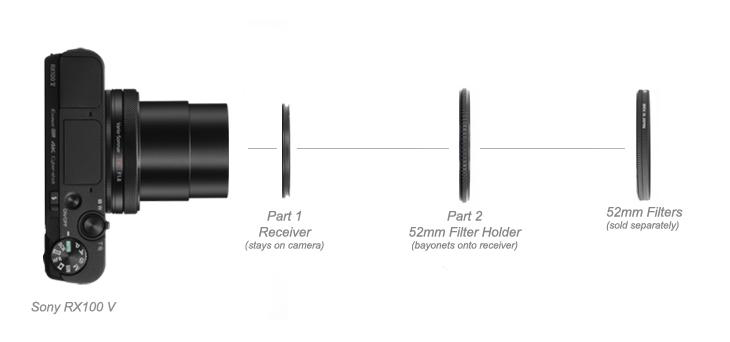
The way the LensMate adapter works is pretty simple – you attach the receiver via adhesive to the front of the lens. This is the only part that stays on the camera all the time. It is about 3mm thick and does NOT interfere with the lens cover or lens retraction at all.
You screw in your 52mm ND filter, or polarizer to the filter holder. You then bayonet this filter holder to the receiver that is already on the camera.
The filter holder attaches on and ff the receiver via a low tension locking system, so there is no force applied to the lens.
LensMate also includes a 52mm pinch-style lens cap so you can protect your filters if you don’t want to remove them all the time.
>>> Check availability and current price of the LensMate filter adapter on Amazon.
XP Photogear MagFilter Threaded Adapter Kit for 52mm filters
Very similar to the LensMate above, this MagFilter Adapter kit allows for the use of 52mm filters on your camera.
There is a small metal ring that attaches via adhesive to the front of the lens, very similar to the LensMate.
The MagFilter itself (where you attach your 52mm filters) then attaches via magnets to the metal ring on your camera.
NOTE: XP Photogear MagFilter also makes a 42mm adapter, with an included CPL filter. I haven’t tried this, as I prefer using my own filters and 52mm filters are much easier to come by.
But based on the measurements, it should fit the RX100 VI and VII. Just be aware that there is a higher chance of vignetting.
>>> Check current price and availability of the MagFilter 52mm adapter kit on Amazon.
Recommended ND filters:
Variable ND Filter:
Variable ND filters are great for video shooting. Because you typically want to maintain the 180-degree shutter rule when shooting video, having a vari-ND is almost necessary in bright light.
They are also handy when you want to keep using a faster aperture for better background blur and subject isolation.
Often times, you can actually use it to control your exposure. i.e. you fix your aperture, shutter speed and ISO, and you adjust your exposure simply by turning the ND filter.
Tiffen 52mm Variable ND Filter:
This is an ND-2 to ND-400 filter, meaning it provides 2 to 8 stops of light control.
It is just 9mm thick and features a wider outer optic, that helps in reducing vignetting at the widest angles of the lens.
>>> Check availability and current price of the Tiffen 52mm Variable ND filter on Amazon.
Gobe 52mm Variable ND Filter:
Similar to the Tiffen filter above, this Gobe filter is also an ND-2 to ND-400 filter, allowing you to control up to 8 stops of light.
Made with high quality Japanese glass, this filter features a 24-layer nano-coating that helps with keeping grime and dirt from your filter.
>>> Check availability and current price of the Gobe 52mm Variable ND Filter on Amazon.
Fixed ND filter:
Breakthrough Photography 52mm 6-stop ND filter (fixed)
Breakthrough Photography has fast become my favorite filter maker. They make high quality filters that produce zero color shift.
This 6-stop ultra-slim ND filter is great for landscape shooters who want a true color-neutral filter. If you don’t do video and don’t need a vari-ND filter, this is the one to get.
>>> Check availability and current price of the Breakthrough 52mm 6-Stop fixed ND filter on Amazon.
Recommended polarizers:
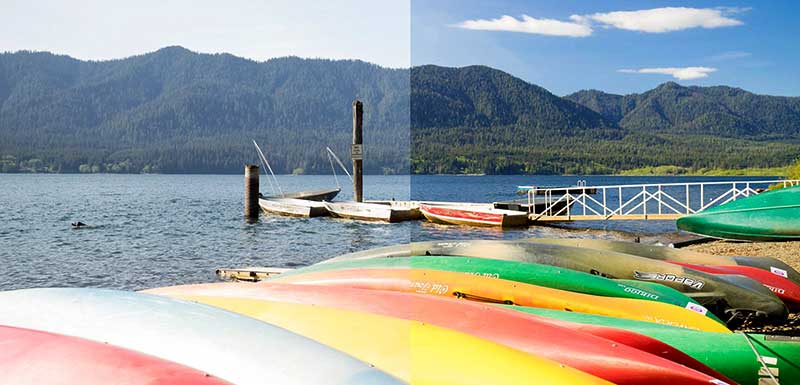
Polarizers are used to manage reflections and suppress glare from non-metallic surfaces, e.g. glass such as windows and buildings, rivers and other bodies of water etc..
Why is that useful? At a minimum, it keeps your images from washing out and looking flat.
At best, it helps you capture detail that you would otherwise not get because of glare and reflections.
This is an effect that cannot be replicated by post-processing software, which is why polarizers are an essential in most photographer’s kits.
They are also useful for darkening skies, to add a bit of pop to your images.
B+W Kaesemann Extra Slim Circular Polarizer (XS-PRO)
Made by Schneider Kreuznach in Germany, this ultra slim polarizer is one of the best in the market.
The mounting thread is made of brass and the glass features a multi-resistant nano coating which helps with suppressing reflections.
The XS-Pro version (as opposed to the F-Pro version) is the ultra-slim version, suitable for wider angle lenses because it helps prevent vignetting.
>>> Check availability and current price of the B+W Kaesemann XS-Pro CPL 52mm on Amazon.
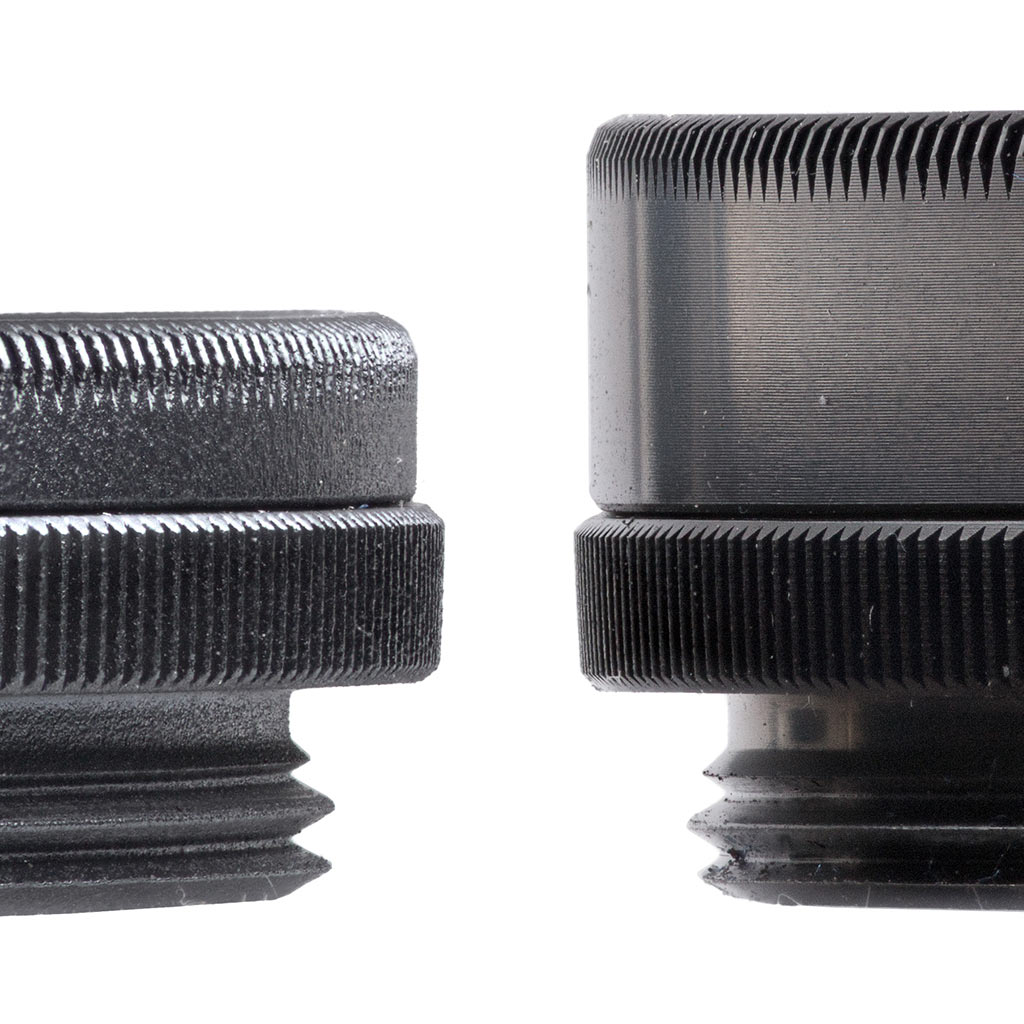
Gobe 52mm Circular Polarizing Lens Filter
Featuring a 12-layer non-coating that helps reduce lens flare and ghosting, this CPL comes with a lifetime warranty.
Although this is Gobe’s entry-level filter, it still uses high quality made in Japan glass attached to a slim magnalium rim. (Their higher quality, pro-level filters, denoted by their Peak3 designation features branded glass made in Germany by Schott).
>>> Check current price of the Gobe 52mm Circular Polarizer and UV filter kit on Amazon.
Breakthrough Photography 52mm X2 Circular Polarizer
The best of the best. In my experience, Breakthrough Photography always have the most color neutral filters in the market.
This CPL uses made in Japan AGC branded glass with a nanotec coating that helps repel dirt, oil and water by beading instead of smearing them over the glass.
Like all Breakthrough filters, this one comes with a 25 year warranty – but you have to remember to register your warranty after buying.
>>> Check current price and availability of the Breakthrough 52mm X2 Circular Polarizer on Amazon.
Best External Microphones for the RX100 VII
One of the biggest upgrades to the Sony RX100 Mark 7 is the addition of a mic jack.
The bad news is that because it doesn’t have a built-in hot shoe, you can’t use any of Sony’s wireless microphone’s which normally plug into their multi-interface hotshoe.
And because there is no hotshoe, you also can’t mount a microphone on top.
To do that, you’ll need a bracket with a cold shoe mount, such as the UURig RX100 VII Camera Mic extension bottom bracket or a full cage (see the SmallRig cage in the Camera Cage section below).
Rode Video Micro
This is great if you want something simple and small, without spending a lot of money. This is a pretty good quality microphone for the size.
This is a shotgun cardioid microphone. It’s called a cardioid because it picks up sound in a roughly heart (cardio) shaped pattern. Meaning, it’s great for picking up sound directly in front and to the sides, but not too great for picking up sound on the rear.
This connects to the camera via the 3.5mm jack and the mic also includes a dead cat windshield that will help in eliminating wind noise.
This mic does not need external batteries, and is powered from the battery on the camera.
>>> Check current price and availability of the Rode Video Micro on Amazon.
Sony ECMAW4 Wireless Microphone
This is quite a bit more expensive than the Rode above, but it is an excellent wireless mic.
This comes in two pieces – a microphone and a receiver. Each piece is powered by one AAA battery.
The receiver connects via the 3.5mm mini jack on the camera and then it connects wirelessly to the mic which you clip to your shirt.
One extra feature of this wireless mic is that the receiver also has a mic built-in and the microphone unit has a talk-back function, which allows the camera operator (with the receiver unit) to talk with the subject (with the microphone unit) and vice-versa.
Overall, this is a great simple way to get high quality audio for your RX100 VII, without dealing with a lot of wires.
>>> Check availability and current price of the Sony ECM-AW4 Wireless Mic on Amazon.
Sony ECMXYST1M Stereo Mic
This is a great microphone to have if you have another Sony camera with a multi-interface hotshoe, such as an RX10IV, A7III or a7 series, A6600, A6400 etc…
On those cameras, or any Sony camera or camcorder with a multi-interface hotshoe, this works as a “wireless” microphone because the mic interfaces with the camera via Sony’s proprietary multi-interface hotshoe.
This proprietary to Sony hotshoe is a hotshoe with extra electronic contacts.
BUT, because the RX100 VII does NOT have a hot shoe, you’ll be forced to plug this in to your camera via the included 3.5mm cable. So, it’s really only a big plus if you own other Sony cameras.
If you want something small and lightweight (just 100g!), this is a great mic that can add some good quality audio to your videos.
>>> Check availability and current price of the Sony ECMXYST1M Stereo Microphone on Amazon.
Camera Cage
SmallRig Cage for the Sony RX100 VII and RX100 VI (CCS2434)
This is the most popular cage for the RX100 M7 and M6. Made of aluminum alloy with a very nicely done and very ergonomic wooden grip, this weighs a mere 123 grams.
The great thing about this cage is that it still gives you full access to all ports including the battery door and SD card. Even the front control ring is still fully accessible.
It adds a cold shoe mount on the upper right, above the grip and on the lower left side. This allows you to mount a microphone or a small LED light, while still allowing you to flip up the screen, or even use the pop-up EVF.
There are several ¼”-20 threads around the cage, allowing you to install a top handle and many other accessories such as a monitor, and it also allows you to mount the camera on a tripod.
>>> Check the availability and current price of the SmallRig Cage CCS2434 on Amazon.
UURig Microphone Extension Bottom Bracket with add-on grip (R01)
This one is a simpler cage than the SmallRig (above). It’s well made, with lightweight CNC-machined aluminum alloy.
The grip is also nice, though it isn’t wooden like the SmallRig. You also lose the top mounted cold shoe, so your microphone will have to go to the side mounted shoe.
There are no ¼”-20 threads around the cage, so unlike the Smallrig, there also isn’t a place to attach a top handle, or other accessories, aside from the cold shoe.
There are still threads on the bottom, so you can mount this on a tripod or monopod.
Overall, if all you want is more grip and the ability to attach a microphone without interfering with your LCD, this is a great choice that’s cheaper than the SmallRig.
>>> Check availability and current price of the UUrig Extension Bottom Bracket on Amazon.
Underwater housing or case for the RX100 VII
I don’t do much underwater shooting, though I do go to the beach a lot, since I am almost always in South East Asia.
I basically have one rule for shooting underwater, either you get a real housing – not one of those Dicapac bags – or don’t risk your expensive camera and just get a fully waterproof point and shoot like the Olympus TG-6 or the Fujifilm XP140.
The RX100 series has always been popular with divers because of its larger 1-inch sensor which has better low light capabilities.
The RX100 VII is no exception because of the addition of real-time tracking autofocus which practically eliminates the need to fiddle with focus while underwater.
But if you’re not willing to invest in a real underwater housing, you’re better off getting the aforementioned Olympus or Fuji and just sell it when you’re done with your vacation.
Is the Sony MPK-URX100A Underwater Housing compatible with the RX100 VI and RX100 VII?
This does NOT work with the RX100 VI and VII because the new lens physically extends out longer.
This housing fits all older models from the RX100, RX100 II, RX-100 III, RX-100 IV, RX-100 V and RX100 VA.
Nauticam Underwater Housing NA-RX100VII for the RX100 VII
Nauticam has made high quality housings for every model of the RX100 series.
This housing is rated for up to 100 meters and includes their ‘moisture alarm’ which is a vacuum check and leak detection system standard in most of their housings.
This ‘alarm’ allows you to monitor the integrity of the housing to make sure it is safe to dive. It does this via a simple color coded LED that lets you know if the vacuum seals are solid or if there is a potential leak.
It’s temperature compensated, so you don’t get false alarms due to a change in environmental temperature or if the camera heats up due to extended use.
Made of aluminum alloy, this housing features large, easy to use controls, including a dial to adjust the front control wheel.
This housing also features several ports for attaching additional accessories such as an HDMI bulkhead for attaching an external monitor and additional brackets for attaching strobes.
>>> Check availability and current price on Nauticam.com.
Fantasea FRX100 VI Limited Edition Housing for the RX100 VI and VII
This housing fits both the RX100 M6 and M7. Depth rated for up to 60 meters or 200 feet, this is an excellent housing for those who don’t want to drop the cash for the Nauticam housing (above).
Made from injection molded polycarbonate, this is less featured than the Nauticam (above), but it’s perfect for those who don’t need too many accessories.
This housing allows you to use the RX100 M6 and M7 up to 66mm-equivalent focal length only (limited to 60mm-equivalent only in depths under 40 meters)
If you attempt to zoom beyond this, you might get an error display requiring you to turn your camera on and off.
The front port has a 67mm filter thread that allows you to attach conversion lenses (e.g. wet wide angle and macro lenses)
It also has a cold shoe mount for mounting strobes and LCD rails for attaching an optional LCD magnifier.
Check availability and current price of the Fantasea FRX100 VI Housing on Amazon.
Related Links:
I´m looking for an external monitor combatible with the sony rx 1007
Thanks for this list & reviews , useful in 2023 to keep interest in Mark 7 .
The stereo microphone has a low output when connected by cable , needs too much gain from camera settings